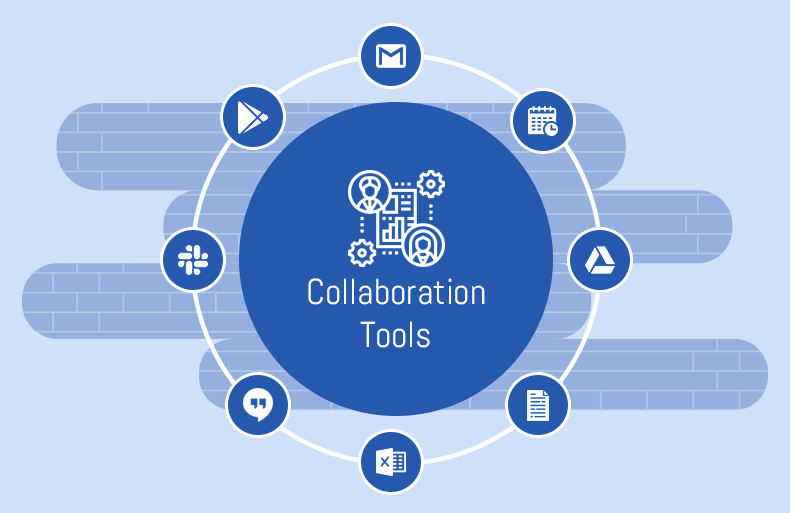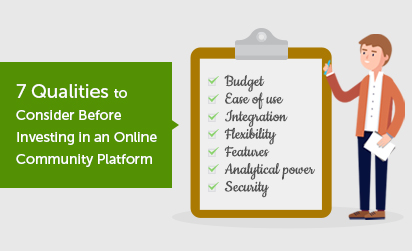We live in an era where consumers rely on the internet and online communities for genuine product/service reviews more than ever. If their experience with a brand is not satisfying, they simply take to the internet and leave a review that might damage the brand’s reputation.
The key to achieving organizational success is by building a community of happy customers. And the only smart way to accomplish this is by listening to your customers and providing them with a space where they can interact openly, exchange ideas, and resolve queries through self-support.
Your customers look for immediate answers and delayed responses just don’t cut it. So, how do you offer a smooth experience to your customers and ensure that they’re getting answers to all their queries in time? By making self-service an integral part of your online communities. Let’s unravel the ‘how’ of it.
What is Customer Self-Service?
Self-service allows you to empower your customers to resolve any issue or query that they might be facing with a product or service almost instantly.
By providing information in the form of FAQs, help guides, and video tutorials available in your community, you can increase your case deflection rate and CSAT, ultimately leading to retention.
According to statistics, 79% of consumers say that they expect organizations to provide self-service tools to help customers find answers without having to contact support. Through self-service, you deliver support to them without the intervention of support personnel.
What is the Role of Self-Service in Online Communities?
In order to keep your customers happy and build long-term relationships with them, it is essential to evolve with their changing needs.
It is projected that 83% of consumers would use an online community for self-service if given a chance. If the customers want to cross-collaborate and find answers to product-related queries, then brands should work to build such an experience for them.
Many websites support FAQ pages and help & support sections, but are filled with information that’s not relevant and doesn’t address any of the issues, the solutions to which the users are actually in search of. The result? Customers lose trust in your brand which pushes them to look for better alternatives.
To combat this, you must provide valuable information to the users with relevant answers in the form of eGuides, help videos, and other collaterals to reduce dependence on the support staff, promoting self-service. A knowledge-based online community can help you organize information and make it easier for your users to navigate to the exact information quickly.
4 Tips to Improve Customer Self-Service in Communities
Gone are the days when customers used to pick up the receiver and dial help. Now, their first approach is to search for a feasible solution on the internet that will help them resolve an issue all by themselves.
So, to make it a smooth browsing experience for them and encourage them to participate, you should upload relevant and unique content and make it easier for them to look for the desired information.
To help you achieve this, we’ve compiled a list of the top 5 tips to improve self-service in your online community.
 1. Update Content Regularly: Your job doesn’t end at simply making content available for consumption by your users. If you’re not updating your content with every product or service enhancement, you’re losing customer interest as they won’t be able to locate the information when they search for it. To provide a wholesome experience to your users, ensure that you’re continuously updating your community knowledge-base with relevant pieces of information.
2. Maintain Consistency Across Channels: Ensuring a consistent user experience across all channels is crucial to keep your customers hooked. Your customers are most likely to exit your community portal if they don’t get an optimized experience. Pay attention to making your self-care portal responsive by making it mobile-friendly.
3. Use Search Fields to Identify Gaps: Many communities lack a search field making it difficult for users to filter through information and find the most relevant help resource and resolve queries on their own. Your customers will fret and quit if they have to search through thousands of pages to find one feasible solution. To avoid this, including a federated search in your online community is what you require. With a search field, you allow your users to enter certain keywords and filter out information quickly, saving time and making the experience hassle-free.
4. Include Rich Media in Your Content: Customers love to view content that’s engaging and has a clear message. Even if they get stuck with something, their first approach is to look it up on the internet and find quick tutorials and solutions. To provide the same experience to your customers, you can include screenshots, video guides, audio guides, and other help resources in your online community. This is a great way to guide customers to the next step, making it a smooth sail for them.
By making valuable resources and information available to the customers, you not only encourage community participation but also establish a level of transparency between your brand and your users.
Online communities are a powerful outlet to encourage self-service and take customer experience a level up. By improving user knowledge and making helpful resources available in your community, you not only provide an efficient support experience indirectly but also boost community engagement.
Wish to enhance your community experience and increase CSAT? Know more!
1. Update Content Regularly: Your job doesn’t end at simply making content available for consumption by your users. If you’re not updating your content with every product or service enhancement, you’re losing customer interest as they won’t be able to locate the information when they search for it. To provide a wholesome experience to your users, ensure that you’re continuously updating your community knowledge-base with relevant pieces of information.
2. Maintain Consistency Across Channels: Ensuring a consistent user experience across all channels is crucial to keep your customers hooked. Your customers are most likely to exit your community portal if they don’t get an optimized experience. Pay attention to making your self-care portal responsive by making it mobile-friendly.
3. Use Search Fields to Identify Gaps: Many communities lack a search field making it difficult for users to filter through information and find the most relevant help resource and resolve queries on their own. Your customers will fret and quit if they have to search through thousands of pages to find one feasible solution. To avoid this, including a federated search in your online community is what you require. With a search field, you allow your users to enter certain keywords and filter out information quickly, saving time and making the experience hassle-free.
4. Include Rich Media in Your Content: Customers love to view content that’s engaging and has a clear message. Even if they get stuck with something, their first approach is to look it up on the internet and find quick tutorials and solutions. To provide the same experience to your customers, you can include screenshots, video guides, audio guides, and other help resources in your online community. This is a great way to guide customers to the next step, making it a smooth sail for them.
By making valuable resources and information available to the customers, you not only encourage community participation but also establish a level of transparency between your brand and your users.
Online communities are a powerful outlet to encourage self-service and take customer experience a level up. By improving user knowledge and making helpful resources available in your community, you not only provide an efficient support experience indirectly but also boost community engagement.
Wish to enhance your community experience and increase CSAT? Know more!

Achieve unmatched levels of community engagement with Grazitti’s community experts. To know more about our services, drop us a line at [email protected] and we’ll take it from there.



